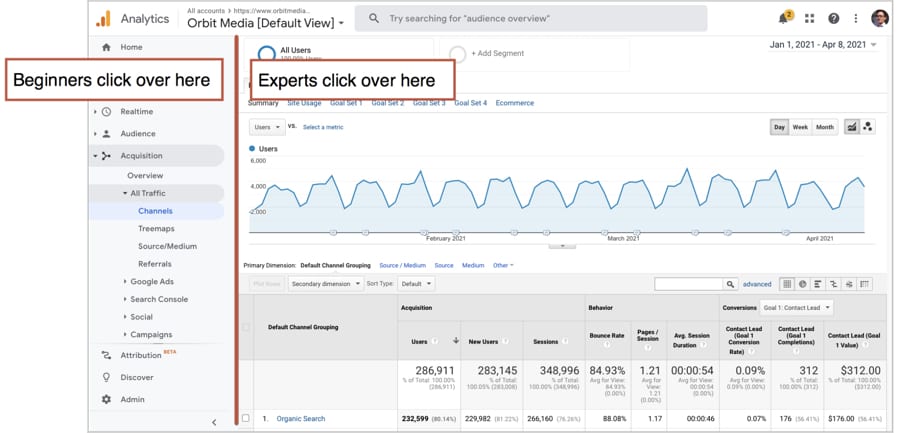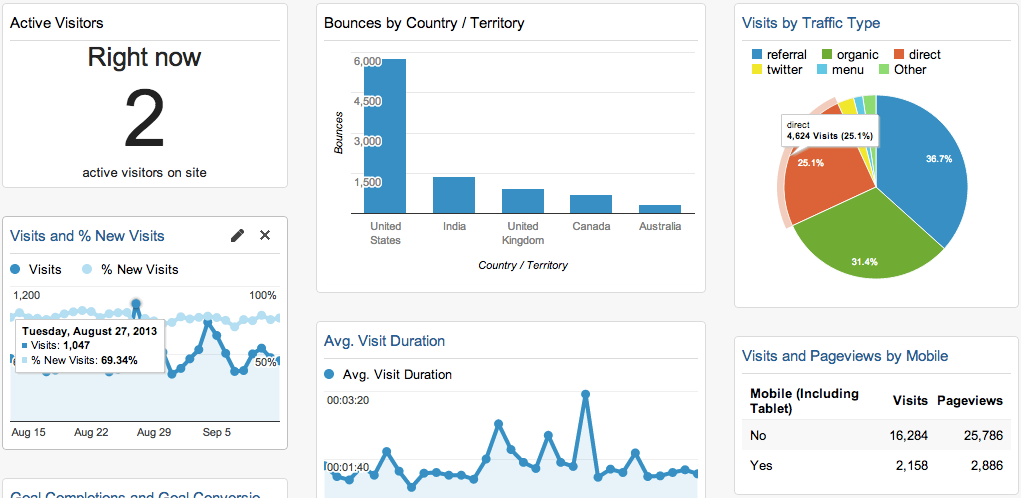Master Site Insights With Accurate Google Analytics Tracking Code
The effective application of Google Analytics depends upon the specific execution of its tracking code, a fundamental step frequently neglected by website owners. This seemingly simple JavaScript bit, when properly put, becomes the backbone of data collection, providing insights right into individual habits and site performance. Nonetheless, challenges can occur during arrangement, potentially skewing the information and bring about mistaken decisions. Recognizing these ins and outs is important for making the most of the advantages of analytics. What are the usual mistakes that could undermine your monitoring efforts, and how can you make sure precision in your approach?
Recognizing Google Analytics Fundamentals
Google Analytics is an important device for site proprietors and online marketers, offering invaluable understandings right into customer actions and site efficiency. At its core, Google Analytics collects information about visitors to a web site, enabling individuals to evaluate metrics such as traffic sources, customer involvement, and conversion rates. Recognizing these principles is essential for enhancing a website's efficiency and boosting individual experience.
The system uses cookies to track interactions, taping data such as page views, session durations, and bounce rates. This info is accumulated and offered via adjustable control panels, enabling users to imagine patterns in time. Secret efficiency signs (KPIs) can be kept track of, such as the total number of individuals, brand-new versus returning site visitors, and the geographical distribution of the audience.
Furthermore, Google Analytics uses division functions, enabling individuals to separate particular website traffic sources or customer demographics for even more targeted analysis. By mastering these foundational components, web site owners can make enlightened decisions regarding web content approach, advertising and marketing projects, and total website enhancements. Eventually, comprehending Google Analytics fundamentals is necessary for leveraging information to drive growth and accomplish service purposes successfully.
Establishing Your Monitoring Code

Duplicate the given monitoring code and paste it right into the HTML of your site. Ideally, this code should be placed in the header area of every web page you desire to track. This ensures that the tracking code lots prior to any type of other web content, permitting it to capture data accurately. If you are making use of a material management system (CMS) like WordPress, there are plugins offered that streamline the combination process.
After setup, validate that the monitoring code is working correctly by making use of Google Tag Aide or the Real-Time records in Google Analytics - when does the google analytics tracking code send an event hit to analytics?. This step is crucial to verify that your information collection is precise and energetic, establishing the structure for insightful analysis
Usual Tracking Code Issues
This might take place when the tracking code is placed in the wrong section of the site's HTML, frequently leading to missing or incomplete information. Additionally, having numerous instances of the monitoring code on a single web page can result in inflated metrics, as user interactions may be counted extra than as soon as.
Another browse around these guys concern emerges from the usage of ad blockers, which can protect against the monitoring code from executing completely, hence skewing data. when does the google analytics tracking code send an event hit to analytics?. Furthermore, failing to configure filters appropriately can cause the exclusion of crucial traffic sources or the incorporation of undesirable recommendation spam, distorting the data collected
Web site proprietors may additionally neglect the importance of monitoring code updates, especially when migrating to Google Analytics 4 (GA4) from Universal Analytics. Finally, inadequate testing before releasing adjustments can cause undiscovered mistakes in the monitoring code, better making complex data integrity. Addressing these usual issues is important for making certain precise tracking and informative analytics.
Analyzing Site Data Successfully
Accurate data collection is only the primary step in leveraging Google Analytics; the genuine worth hinges on properly analyzing that information to drive informed decision-making. To accomplish this, it is important to recognize key efficiency signs (KPIs) that align with your organization objectives. Focus on metrics such as conversion prices, individual involvement, and traffic sources, as these will certainly provide understandings right into user actions and the general performance of your web site.
Using Google Analytics' division functions enables a much deeper understanding of your target market. By damaging down information right into particular demographics, behaviors, and web traffic channels, you can reveal fads and patterns that educate targeted approaches. Carrying out custom-made records and dashboards can enhance this process, making it possible for quick access to important information.
Furthermore, frequently reviewing information patterns with time helps to determine anomalies and possibilities for renovation. Make use of visualization tools to existing information in an easily absorbable style, assisting in a lot more efficient interaction with stakeholders. Eventually, the ability to examine internet site information properly encourages companies to make tactical choices that boost user experience, optimize advertising and marketing initiatives, and drive development.

Best Practices for Accurate Monitoring
Implementing effective monitoring techniques is important for obtaining trusted information in Google Analytics. To ensure accurate tracking, start by correctly setting up the Google Analytics tracking code on every page of your internet site. This can be accomplished through a tag supervisor or by straight installing the code right into the HTML.
Following, configure your Google Analytics account to exclude inner website traffic. This can be done by establishing up filters that determine and remove brows through from your organization's IP address, therefore protecting against manipulated data. In addition, use occasion monitoring to check certain user communications, such as downloads or video clip plays, which standard web page views might neglect.
Regularly investigate your tracking setup to confirm that all functions, such as objectives and ecommerce tracking, are working appropriately. Establish a constant naming convention for your projects and events to facilitate easier coverage and analysis.
Last but not least, think about leveraging UTM specifications for projects to gain insights right into the performance of different marketing efforts. By following these ideal practices, you can enhance the accuracy of your information collection and analysis, ultimately resulting in even more enlightened decision-making for your website.
Final Thought
Exact application of the Google Analytics tracking code is necessary for grasping internet site insights. By guaranteeing the this contact form tracking code is see this website appropriately put and frequently investigated, website proprietors can capture crucial user communication data, therefore assisting in the recognition of essential efficiency indicators. Effective analysis of this data, integrated with adherence to ideal methods, makes it possible for informed decision-making and the optimization of on-line techniques. Ultimately, a robust monitoring structure enhances the capability to drive involvement and improve total website performance.

Insufficient screening prior to introducing changes can result in unseen mistakes in the tracking code, further making complex information reliability.Implementing efficient monitoring methods is critical for obtaining trustworthy information in Google Analytics. By making certain the tracking code is appropriately put and regularly investigated, site proprietors can record essential customer communication information, hence assisting in the identification of vital performance indications.
Comments on “Trick Considerations for Online Marketers: When Does the Google Analytics Tracking Code Send an Event Hit to Analytics?”